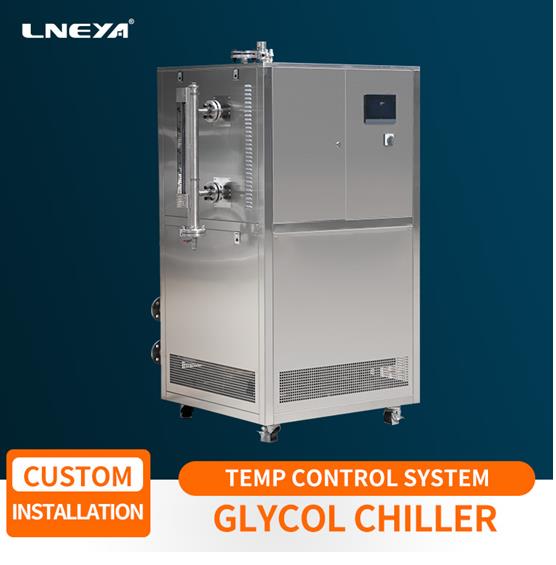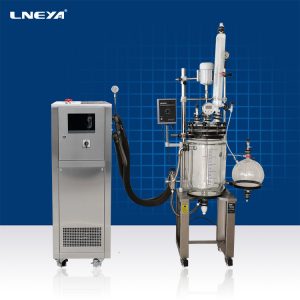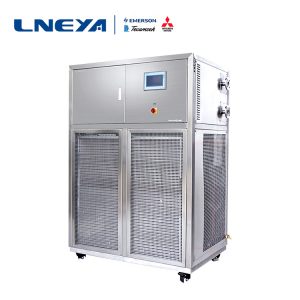Temperaturbeschreibung der Glykol-Kühlmaschine
For users and friends, it is necessary to
have a deep understanding of glycol chillers before use. It is recommended to
know the temperature in various equipment such as refrigeration system,
evaporating temperature, condensing temperature, etc.

If the refrigeration system of the glycol
chiller can operate safely, three points need to be paid attention to:
1. The pressure of the refrigerant in the
refrigeration system needs to be observed at any time to avoid abnormal high
pressure, so as to avoid rupture;
2. The phenomenon of damp heat stroke and
liquid shock shall not occur and occur, so as to avoid damage;
3. Pay attention to timely maintenance of
each component, so as to avoid component defects and cause malfunction of the
glycol chiller.
The evaporation temperature of a glycol
chiller refers to the temperature at which the refrigerant in the evaporator
inside the unit boils and vaporizes under a fixed pressure. The condensing
temperature is the gas refrigerant in the condenser of the unit, and the
temperature at which it condenses into a liquid under a certain pressure is
called the condensing temperature. The recooling (or subcooling) temperature
refers to the temperature at which the condensed liquid refrigerant is cooled
to below the condensing temperature under the condensing pressure, which is
called the recooling temperature (or subcooling temperature). The intermediate
temperature of the glycol chiller refers to the two-stage compression system.
The saturation temperature of the refrigerant in the intercooler at the
intermediate pressure is called the intermediate temperature.
In fact, the temperature description of the
glycol chiller is quite a lot. So how to detect the suction temperature and
discharge temperature of the glycol chiller compressor after knowing these
temperatures? The suction temperature of the compressor can be measured from
the thermometer in front of the suction valve of the compressor. The suction
temperature is generally higher than the evaporating temperature, and the difference
depends on the length of the return pipe and the insulation of the pipe.
Generally, it should be 5-10 higher than the evaporating temperature. The
superheat can be adjusted by changing the liquid supply; The air temperature
can be measured from a thermometer on the exhaust pipe. The exhaust temperature
of a glycol chiller is directly proportional to the (suction and exhaust)
pressure ratio and the suction temperature. The higher the suction superheat
and the higher the pressure ratio, the higher the exhaust temperature,
otherwise the opposite. Generally, the exhaust pressure is slightly higher than
the condensing pressure.
Therefore, in order to better run the
glycol chiller, users still need to understand it. If you don’t
understand, you can contact us at sales@cnzlh.com. LNEYA is a chiller
manufacturer.
Verwandte Empfehlungen
-
Benefits of using heating and cooling equipment in the laboratory
1151Laboratory heating and cooling equipment (also known as: cold and heat integrated machine, refrigeration and heating cycle device) is a device that integrates cooling and heating, heating and cooling can be quickly converted, and the same medium (...
Details anzeigen -
Heat sink temperature application note
1069As we all know, the semiconductor industry has certain characteristics, small size, high reliability, wide working range, and has a wide range of applications in the civilian, industrial and other fields of semiconductors, but with the increasing ...
Details anzeigen -
Instructions On Refrigeration Of Low Temperature Chiller Circulating Machine Screw Compressor
1296Due to different compressors, the performance of low temperature chiller circulation machine is also different. Screw compressor is different from the piston compressor, whose structure is more sophisticated. Therefore, if the user needs to choose...
Details anzeigen -
100L high and low temperature thermostat installation instructions
835The 100L high and low temperature thermostat uses coolant as the transmission medium to transfer the heat generated by other instruments or equipment that need to be cooled, and dissipate the heat to the outside of the equipment through the refrig...
Details anzeigen
 LNEYA Industriekühler Hersteller Lieferant
LNEYA Industriekühler Hersteller Lieferant












